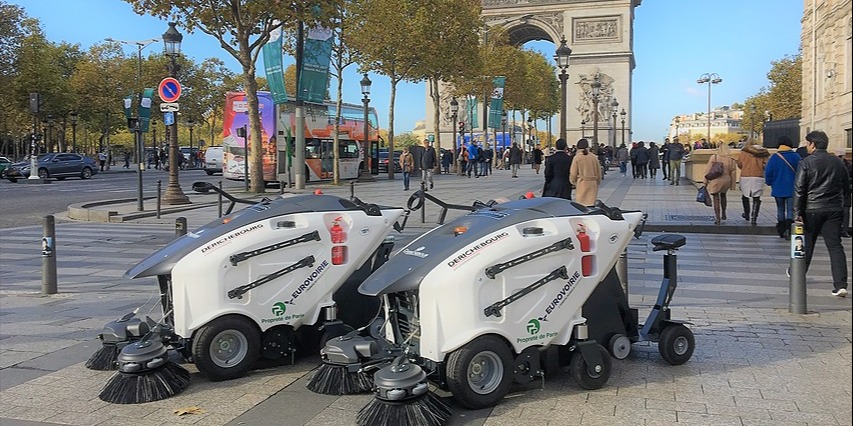
Tips for Cleaning with a Road Sweeping Machine
Keeping roads and streets clean is a critical task that ensures safety, environmental health, and aesthetic appeal. A road sweeping machine, with its advanced technology and efficiency, is an invaluable tool for this purpose. However, to maximize its effectiveness, it's essential to use it correctly. Here are some expert tips for cleaning with a road sweeping machine.
1. Conduct a Pre-Operation Check
Before starting any cleaning task, it's crucial to inspect the road sweeper to ensure it's in good working condition. Here are key points to check:
- Fluid Levels: Check engine oil, hydraulic fluid, and coolant levels.
- Tires and Brushes: Ensure that tires are properly inflated and that brushes are in good condition, without excessive wear or damage.
- Filters and Hoppers: Ensure that filters are clean and hoppers are empty.
- Lights and Signals: Verify that all lights and signal indicators are functioning properly for safety during operation.
2. Plan Your Route
Efficient sweeping requires strategic planning. Determine the route you will take, considering factors such as traffic patterns and the types of debris present. A well-planned route minimizes overlap and ensures comprehensive cleaning.
- Sweep During Low Traffic Hours: Early morning or late evening hours are ideal for sweeping busy roads.
- Segment the Area: Divide large areas into manageable sections to avoid missing spots.
- Account for Obstacles: Identify any obstacles like parked cars, roadwork, or narrow streets that may require special attention.
3. Adjust Settings for Optimal Performance
Modern road sweepers come with adjustable settings to cater to different cleaning needs. Adjust the machine's settings based on the type of debris and road surface.
- Brush Speed and Pressure: Adjust brush speed and pressure depending on the type of debris. Lower speeds work well for fine dust, while higher speeds are better for heavier debris.
- Water Spray: Use the water spray feature to control dust, especially in dry conditions. Ensure the water tank is filled before starting.
- Vacuum Power: Increase vacuum power for areas with fine particles to ensure thorough cleaning.
4. Drive at the Right Speed
The speed at which you drive the sweeper significantly impacts its effectiveness. Driving too fast can cause the machine to miss debris, while driving too slow can be inefficient.
- Optimal Speed: Maintain a consistent speed, typically between 3 to 7 mph, depending on the machine and the type of debris.
- Adjust for Conditions: Slow down for heavy debris or areas with a lot of fine particles to ensure the machine has time to collect all material.
5. Overlap Passes for Thorough Cleaning
To ensure no debris is left behind, overlap your passes slightly. This technique is especially useful for wider roads or areas with heavy debris.
- Overlap by 6 to 12 Inches: This ensures that the edges of your passes are thoroughly cleaned, leaving no gaps.
- Check Work Progress: Periodically check your progress to ensure the sweeping is thorough and even.
6. Regularly Empty the Hopper
A full hopper can decrease the efficiency of the road sweeping machines. Regularly emptying the hopper ensures that the machine operates at peak performance.
- Empty When Full: Don't wait until the hopper is overflowing. Empty it when it reaches around 75-80% capacity.
- Dispose of Debris Properly: Follow local regulations for disposing of collected debris, especially if it contains hazardous materials.
7. Perform Post-Operation Maintenance
After completing your sweeping task, perform maintenance checks to keep your machine in optimal condition for future use.
- Clean Brushes and Filters: Remove any debris caught in the brushes and clean or replace filters as needed.
- Inspect for Damage: Check for any damage or wear that may have occurred during operation and address it promptly.
- Refuel and Restock: Refill fuel and water tanks, and restock any supplies used, such as water for dust control.
8. Train Your Operators
Proper training is crucial for safe and efficient operation of road sweeping machines. Ensure that operators are well-trained in using the machine and understanding its controls and features.
- Provide Comprehensive Training: Cover all aspects of operation, maintenance, and safety procedures.
- Stay Updated: Keep operators informed about new features or updates to the equipment.
Conclusion
Using a road sweeping machine effectively requires careful planning, proper adjustments, and regular maintenance. By following these tips, you can ensure that your roads and streets are kept clean, safe, and appealing. With the right techniques and a well-maintained machine, road sweeping can be a smooth and efficient process that benefits the entire community.